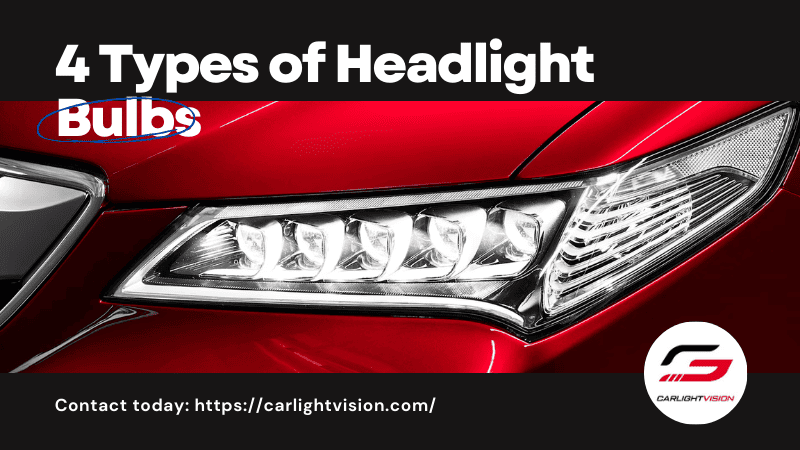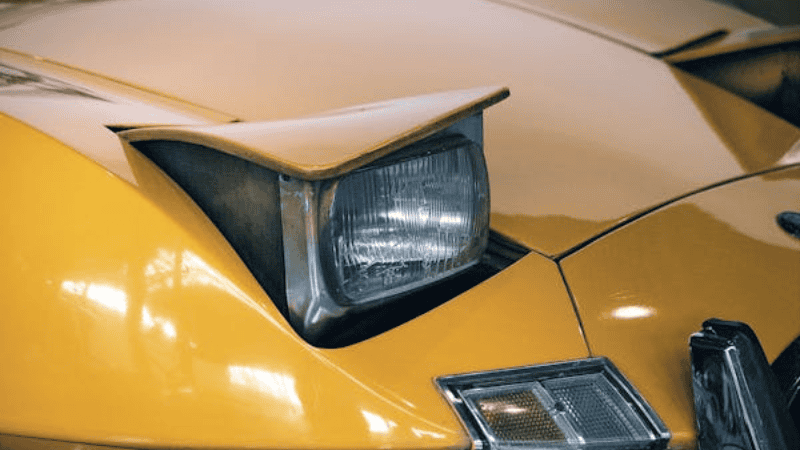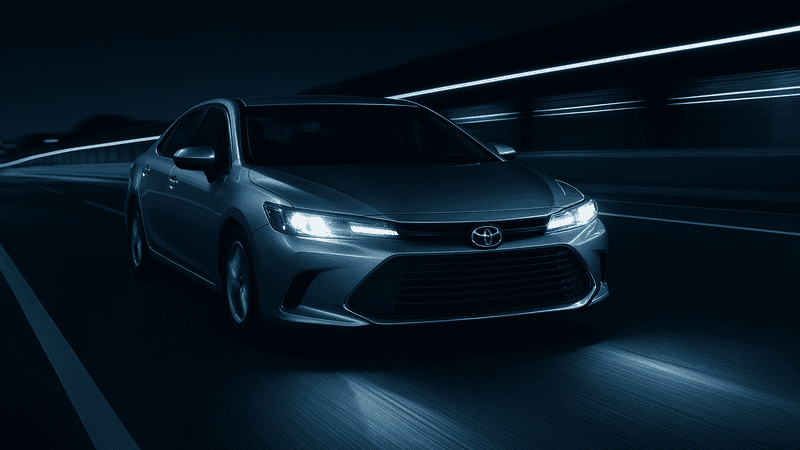If you’re thinking about new headlights, there are four types of bulbs to choose from. These bulbs use different technologies, resulting in different light outputs, lifespans, and other qualities.
Read on to find out about these headlight bulb types and how you can choose the one that meets your needs.
Types of Headlights
The four types of headlights are halogen, HID, LED, and laser. Despite their common purpose and similar shapes, the technology behind these bulbs is very different, and their systems are often incompatible.
Halogen Headlights
Halogen headlights are the standard solution manufacturers use on new vehicles. These have an acceptable light output for most applications and are cheap to manufacture.
Construction
Halogen bulbs use incandescent or filament lighting technology to produce light. The tungsten filament in these bulbs is held between two electrodes and housed in a sealed glass enclosure. This enclosure also contains small amounts of halogen gas.
When the light is turned on, the tungsten wire is heated to very high temperatures, which causes it to glow and emit light. The halogen gas helps to prolong the bulb’s life by reacting with evaporated tungsten and depositing it back on the wire filament.
Performance
Halogen bulbs are the cheapest of the four options. However, they also have short lifespans, typically lasting between 450 and 1000 hours. This short lifespan is the result of their high operating temperatures.
The amount of light from these bulbs is also the lowest of the four, maxing out at approximately 1500 lumens. Many drivers find this level of brightness to be insufficient in certain driving conditions.
LED (Light Emitting Diode) Headlights
LED headlights were first introduced in the 2000s, but adoption has risen sharply recently. This is due to improvements in the quality of the light-emitting diodes used in these headlights and a decrease in cost. More car manufacturers are also installing them in new cars.
Construction
LED headlights don’t have glass bulbs, although they are constructed in the shape of other automotive bulbs. Their light comes from special diodes that produce light when an electric current is passed through them.
In the lamp assembly, the diodes are placed in the same position as the tungsten filament in halogen bulbs to maximize compatibility with existing systems. These bulbs also have parts that provide active or passive cooling. Adequate cooling is necessary to achieve a good light output and a long lifespan.
LED bulbs also have a part called the driver. This serves as the interface between the car’s wiring and the LED bulb. It ensures the bulb gets the type and amount of power it needs.
Performance
Good quality LED lights last between 10,000 and 30,000 hours. This means you may never have to change them after installation. This durability has a bigger price tag, but the prices of LED bulbs have gone down significantly, and some are comparably priced to HID bulbs.
LED lights have also gotten brighter, and some can light up the road ahead, as well as HID headlights. Regular LED headlamps are rated at around 4000 lumens.
HID (High-Intensity Discharge) Headlights
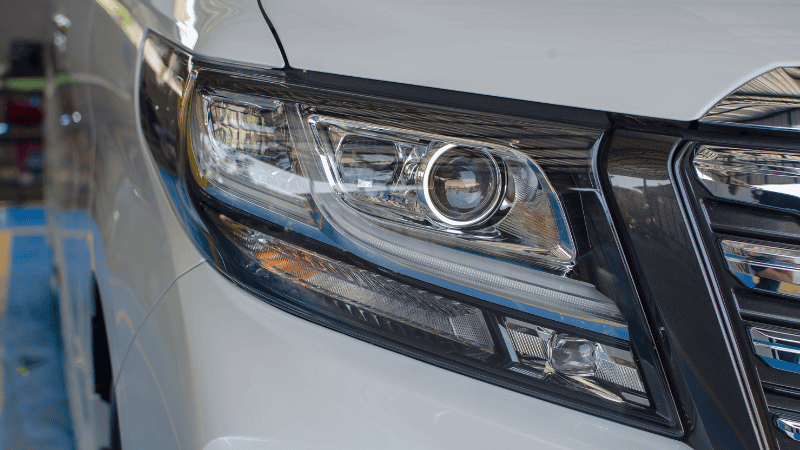
HID or xenon headlights are used as the benchmark for the brightest headlights, but this doesn’t mean they are the brightest option out there today. These headlights were introduced in the 1990s and are still a popular choice for many car owners.
Construction
The bulb part of HID lights consists of two electrodes with a gap between them inside a sealed glass tube. The glass tube also contains xenon gas, halide salts, and other gases.
The light from xenon bulbs comes from a combination of the electric arc created between the two electrodes and the excitation of the gas molecules inside the bulb. The halide salts in the bulb also contribute to the brightness and color of xenon lights.
Xenon bulbs require a ballast to produce the initial high-energy arc and to control the voltage once optimal brightness levels are attained.
Performance
Standard HID headlights can last around 5000 hours, but higher-quality ones last even longer. However, these bulbs degrade, resulting in dimmer lights over time before complete failure.
HID headlights are usually rated between 3000 and 5500 lumens. They are less power-hungry than halogen bulbs but are less energy-efficient than LED bulbs.
Laser Headlights
Laser headlights for the latest in automotive lighting solutions. These lights are said to be significantly brighter than LEDs and are already present in some production cars. However, a pair of these cost thousands of dollars and are not a realistic option for most drivers.
Construction
The key components of a laser headlight are one or several blue solid-state laser diodes, mirrors, a phosphorus-filled lens, and a reflector.
The light beams from laser headlights don’t come directly from the laser diodes. The lasers are fired on mirrors that concentrate the energy onto a yellow phosphorus-filled lens. This causes the yellow phosphorus to become exited, causing it to emit a bright white light.
The white light from the phosphorus is then shone onto a reflector before being cast onto the front of the car. This also helps to diffuse the bright light.
Performance
Laser headlights remain a novelty and there is limited information on their performance, especially for after-market solutions. However, BMW claims their laser headlights could be 1000 times brighter than LEDs.
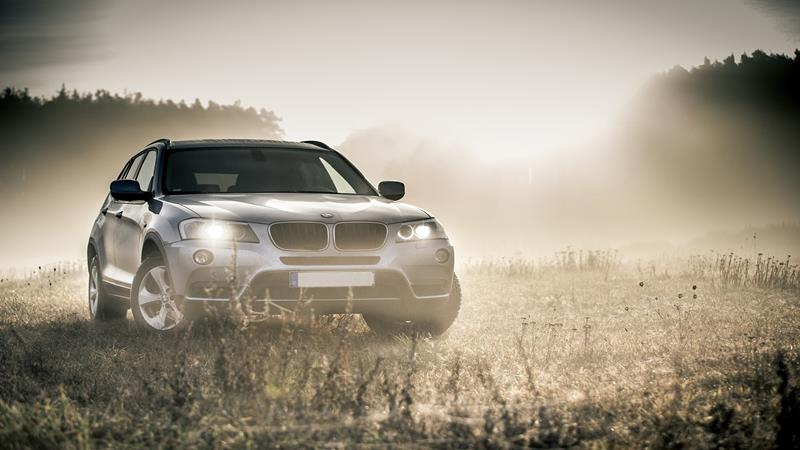
The manufacturer also claimed that laser headlights are more efficient, using only a fraction of the power consumed by LED headlights.
Comparison Of 4 Types of Headlights
The table summarizes how the four types of headlight bulbs compare. This comparison is of standard bulbs, but it’s possible to find other models that don’t strictly match the criteria below. For example, some LED headbulbs are rated for 50,000 hours of use.
| Feature | Halogen | LED | HID | Laser |
|---|---|---|---|---|
| Brightness | Least bright | Comparable to HID bulbs but can be brighter | Brighter than halogens and used as the benchmark | Potentially the brightest headlight option |
| Lifespan | 1000 hours or less | 10,000 – 30,000 hours | 5000 hours | Unconfirmed |
| Energy Use | Highest | Lower than HID and Halogen bulbs | Lower than Halogen bulbs | Lowest |
| Glare | Very low | High | Very High | Unknown |
| Complexity of Upgrade | Typically zero | A kit may or may not be required depending on the bulb. | An upgrade kit will be required. | Retrofitting will be required. |
| Cost | Lowest | Mid to high | Mid to high | Very high |
| Availability | Very High | High | Very High | Very low |
From the table, it is clear that HID and LED bulbs offer the best balance of cost and performance. Their brightness levels and longer lifespans are proven and make them the best headlight bulbs for most drivers looking for an upgrade.
It’s also clear that laser headlights are ahead of their time. They cost a fortune, and realistic aftermarket options are unavailable to most drivers. There’s also no information on key areas such as lifespan.
When to Choose Different Types of Headlights
As the lowest cost and most available option, halogen bulbs are the best option when you are on a very low budget. You may struggle to light the road well enough with these headlights in the worst conditions, and you should budget to replace them after some months.
LED headlights are a good choice if you want a straight swap of your halogen or HID bulbs or if you’re ready to change your entire headlight assembly. Professionally installed LED headlights provide enough light and may never need to be replaced. It is important to choose a high-quality LED bulb that is compatible with your vehicle. Consult your owner’s manual to be sure.

HID headlights are a good choice if you want bright headlights at a cost that’s not too high. You will need to replace these after some years as they dim with age. You’ll also need an upgrade kit. These are a good choice when good-quality LED bulbs are not yet available to you.
Laser headlights are only a good choice today if they are manufacturer-installed.
Conclusion
Drivers have more lighting options than ever before, but this also means they must take time to understand what the different options offer.
Halogen bulbs are cheap and HID bulbs are bright with decent lifespans. A good quality LED bulb might be pricey, but it will outperform the others in most other criteria. Professional installation is key for both LED and HID bulbs.
As for laser headlights, these are far too early in their development to be considered a realistic option.
Thinking About LED Headlights? Check Out Carlightvision
At Carlightvision, we have invested time and effort to manufacture some of the best quality LED headlights in the market today. Our team conducts extensive research and we work with customers to develop the type of product they need. Visit our website to find out more about the LED headlight solutions we offer and how we can meet your lighting needs today.
